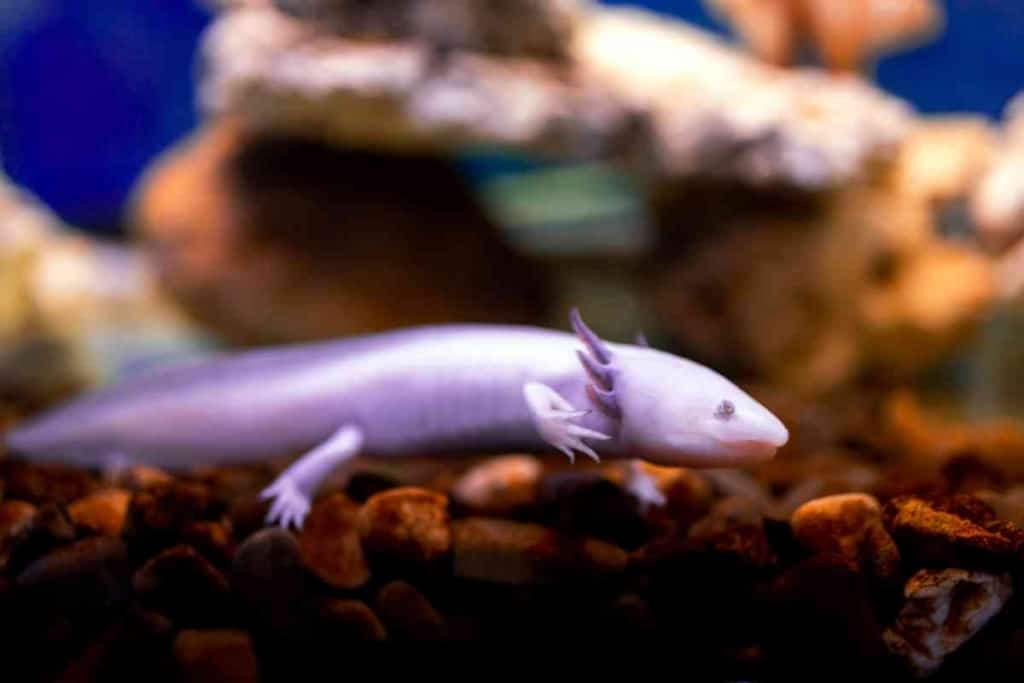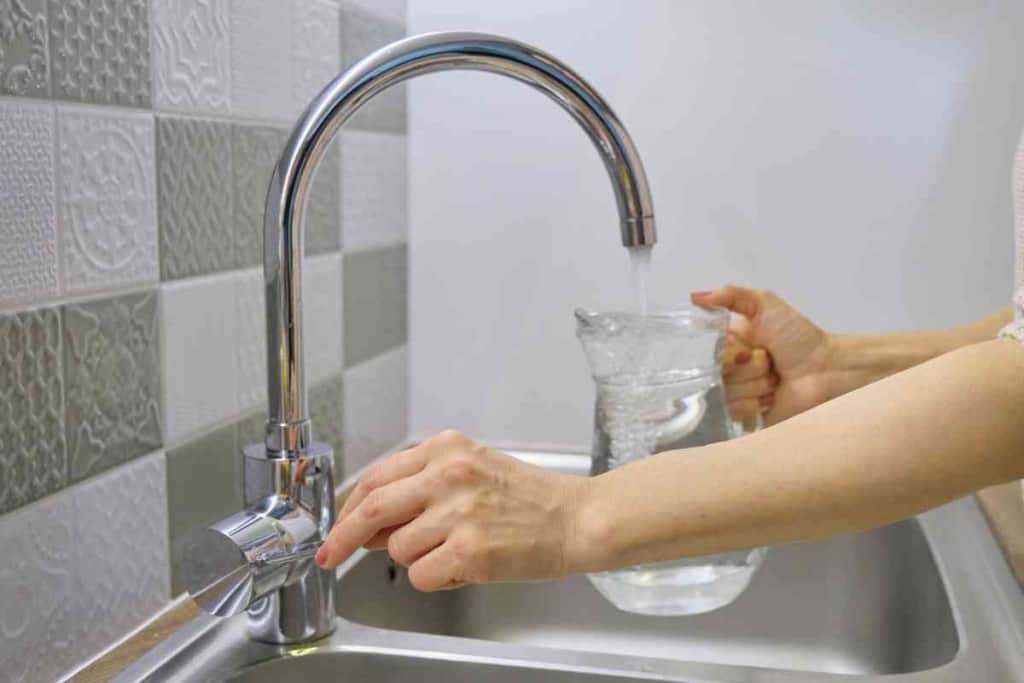Can Axolotls Live In Tap Water? Ways To Tell If Yours Is Safe!
Axolotls are aquatic creatures, but when kept as pets, it is important to arrange the right water parameters and establish the right filtration system for their habitat. So can axolotls live in tap water?

Can I keep my axolotl in tap water?
You may be able to keep your axolotl in tap water depending on the quality of tap water in your area. In some areas, tap water has a high amount of chlorine, which is bad for axolotls. Therefore, you need to try a different kind of water or de-chlorinate the water with products like DeChlor.
Having set up multiple axolotl tanks over the years, we have a lot of experience with these tanks and the kind of water best suited for these exquisite creatures. Here, we’ll talk about whether axolotls can live in tap water.
Water Options for Your Axolotl
Bottled Water
When caring for an axolotl, it’s important to ensure that their water is clean and free of contaminants. While tap water can be safe for human consumption, it may contain chemicals and minerals harmful to your pet.
This is why many axolotl owners use bottled water for their tank water. However, not all bottled water is suitable for axolotls – you’ll want to ensure that it isn’t distilled and hasn’t gone through osmosis.
Distillation removes all the minerals, while osmosis further filters out any remaining particles. It’s also important to note that osmosis refers to the natural process of water molecules passing through a semipermeable membrane to balance concentrations on either side.
This process helps remove any remaining nutrients necessary for an axolotl’s well-being. By checking these factors before purchasing bottled water for your axolotl, you can provide them with the cleanest and safest water possible.
Tap Water
When filling up your axolotl tank with tap water, it’s important to let the water sit for at least 24 hours before adding it to the tank.
This allows time for the chlorine in the tap water to dissipate, as chlorine can be harmful to axolotls. In addition, dechlorination drops can also be added to tap water to remove any trace amounts of chlorine before introducing it into the tank.
Keeping your axolotl in clean, chlorine-free water is essential for their health and well-being. It may take some extra effort, but allowing tap water to sit and using dechlorination drops will ensure that your pet has a safe and comfortable living environment.
Well Water
Avoiding well water is important when choosing an appropriate water source for your axolotl. Well, water often has a different pH level than what is ideal for axolotls, and it can also contain iron, which can be harmful to sensitive amphibians.
Instead, opt for dechlorinated tap water or bottled spring water to ensure the proper balance of minerals and pH levels for a happy and healthy pet.
Consistently monitoring and adjusting the water quality is crucial in maintaining your axolotl’s well-being, so don’t neglect this important aspect of care!
In addition to using clean water, regular water changes are necessary to remove any waste buildup and refresh the habitat. Your axolotl will thrive in its aquatic home with proper attention to these factors.

Distilled Water
If you’re an axolotl owner, you may be tempted to fill their tank with distilled water because it’s cheap and readily available.
However, distilled water is not suitable for these creatures. It lacks essential nutrients that axolotls need to thrive and has a pH below 7, which is too acidic for their sensitive bodies.
Instead, the best option is to use dechlorinated tap water or bottled spring water with a neutral pH level of around 7.
Maintaining the proper water quality for your axolotl is crucial to their health and well-being, so avoid the temptation of distilled water and opt for a suitable alternative instead.
What Is the Perfect Water Type for Axolotls?
While it may seem counterintuitive, axolotls actually thrive in brackish water. This unique type of water is a mixture of fresh and saltwater, creating an environment similar to that of the axolotl’s natural habitat in southern Mexico.
In freshwater environments, axolotls can experience health issues such as stunted growth and skin irritation. In contrast, brackish water allows them to live longer and reach their full size potential.
As an added bonus, it also helps control algae growth and reduces the need for frequent water changes.
So if you’re looking to keep axolotls as pets, it’s worth investigating the benefits of creating a brackish water habitat for them. It may just be the key to ensuring their long-term health and happiness.
Things to Consider When Filling Your Axolotls Tank with Water?
pH Levels
As a pet axolotl owner, one of the most important factors to consider when filling their aquarium with water is the pH level. Ideally, the water should have a pH range of 7.4 to 7.6.
Too acidic or alkaline water can negatively affect your axolotl’s health. Additionally, they may struggle to regulate their pH levels in water with an incorrect balance.
However, constantly checking and adjusting the water’s pH level can also be stressful for your pet axolotl. To maintain a balanced tank, invest in a reliable testing kit and potentially even a water filter to help regulate the pH levels.
Remember to regularly clean their tank and change their water to keep you and your axolotl happy and healthy.
Checking the pH level of water is important for maintaining a balanced ecosystem and ensuring the health of plants and animals.
One common way to check pH levels is with test strips that change color when placed in water, indicating the levels on a scale.
Digital pH meters can also be used to measure and display pH levels electronically. Another option is the drops-and-compare method, where drops of a solution are added to the water until there is a color match with a comparison chart.
It’s also possible to send water samples to a lab for more accurate testing. No matter what method is used, it’s important to regularly check the pH level of water to properly monitor and manage its quality.
Temperature
When setting up your axolotl tank, it’s important to pay attention to the water temperature. 60 – 64 Fahrenheit is the ideal range for axolotls, and any significant departures from this can potentially lead to stress or illness.
The easiest way to check the temperature is with a digital thermometer, which can be easily attached to the side of the tank.
It’s also important to monitor the temperature regularly, as fluctuations can occur due to external factors such as room temperature or changes in lighting.
In addition, make sure that your tank’s heater is functioning properly and keeping the water at a stable temperature. Taking the time to check and maintain the water temperature will help ensure your axolotl stays happy and healthy.
Key Takeaways
- First, it is important to use water free of chlorine and other chemicals, as these can harm the sensitive skin of axolotls.
- Second, water temperature is vital – water that is too warm or cold can potentially harm axolotls. It’s best to stick with water around room temperature or slightly warmer.
- Third, general hardness should also be considered – hard water may affect proper water pH levels and result in health problems for axolotls.
- Fourth, water flow should be gentle and not overly strong, as axolotls prefer still water.
